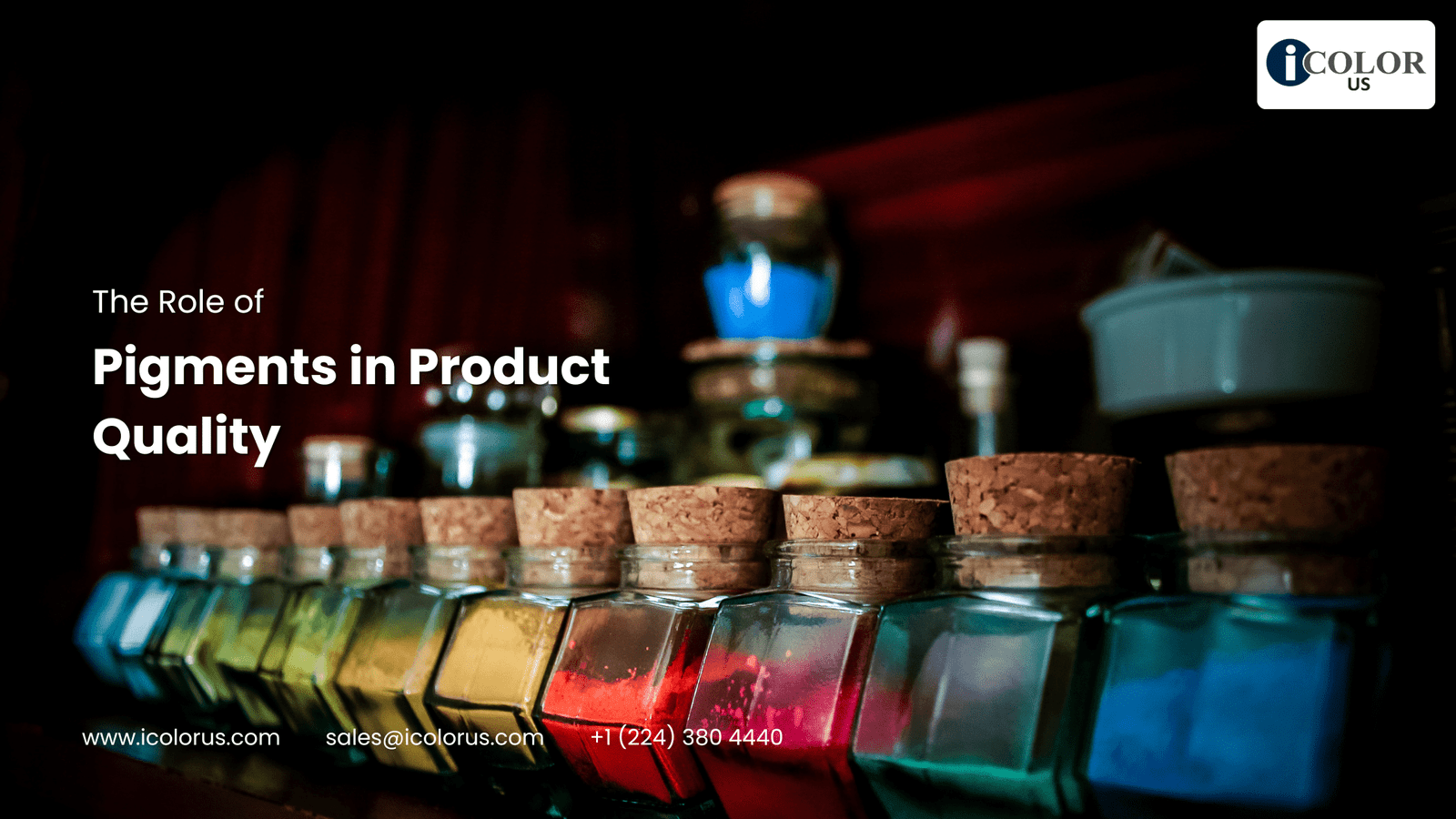The Role of Pigments in Product Quality
In the ever-evolving world of manufacturing and consumer goods, the importance of pigments cannot be overstated. From the vibrant colors in textiles to the eye-catching hues in cosmetics, pigments play a crucial role in defining product quality. This article delves into the multifaceted role of pigments in enhancing product quality, highlighting their significance in various industries, the science behind their functionality, and the impact they have on consumer perceptions and preferences.
Understanding Pigments
Pigments are substances that impart color to other materials. They are finely ground solid particles that can be organic or inorganic and are used to add color to a wide range of products. Unlike dyes, which dissolve in their medium, pigments remain insoluble and are used in a dispersed form. This characteristic makes pigments highly versatile and valuable across multiple industries.
The Science Behind Pigments
At a molecular level, pigments absorb specific wavelengths of light and reflect others, which determines their color. For example, a pigment that absorbs blue light and reflects red light will appear red to the human eye. The stability, brightness, and opacity of pigments depend on their chemical composition and structure. Understanding these properties is crucial for manufacturers aiming to achieve consistent and high-quality color in their products.
The Role of Pigments in Different Industries
1. Textiles and Apparel
In the textile industry, pigments are used extensively to dye fabrics. The choice of pigment affects not only the color but also the durability and feel of the fabric. High-quality pigments ensure that the colors remain vibrant even after multiple washes and exposure to sunlight. For instance, pigments used in sportswear must withstand frequent washing and sweating without fading.
2. Automotive Coatings
The automotive industry relies heavily on pigments for vehicle coatings. The aesthetic appeal of a car is significantly influenced by its color, which is achieved through high-quality pigments. Additionally, these pigments provide protective properties, such as resistance to UV radiation and corrosion, thereby enhancing the longevity and durability of the vehicle’s exterior.
3. Cosmetics
In cosmetics, pigments are crucial for creating a wide range of products, from lipsticks to eyeshadows. The safety and quality of these pigments are paramount, as they come into direct contact with the skin. Manufacturers use FDA-approved pigments to ensure that their products are safe for consumers. Moreover, the vibrancy and stability of pigments are essential for maintaining the product’s appeal over time.
4. Plastics and Polymers
Pigments are widely used in the plastics industry to add color to products ranging from household items to industrial components. The choice of pigment can influence the mechanical properties of the plastic, such as its strength and flexibility. High-quality pigments ensure that the colors are consistent and do not degrade over time, even when exposed to harsh environmental conditions.
5. Printing Inks
In the printing industry, pigments are a key component of inks. They determine the color and quality of the print. High-quality pigments result in sharp, vibrant prints that are resistant to fading. This is particularly important in packaging, where the visual appeal of the product can influence consumer purchasing decisions.
Impact of Pigments on Product Quality
1. Aesthetic Appeal
The most obvious role of pigments is in enhancing the aesthetic appeal of products. Vibrant, consistent colors make products more attractive to consumers. In industries like fashion and cosmetics, where appearance is a critical selling point, the right pigment can make a significant difference in a product’s success.
2. Brand Identity
Colors are integral to brand identity. Companies often choose specific pigments to create a distinctive look for their products, which helps in building brand recognition and loyalty. For example, the iconic red of Coca-Cola or the blue of Tiffany & Co. are instantly recognizable and closely associated with their respective brands.
3. Functionality and Performance
Beyond aesthetics, pigments can enhance the functionality and performance of products. In automotive coatings, for example, pigments provide UV protection and corrosion resistance. In textiles, they can improve fabric durability and colorfastness. These functional benefits are essential for maintaining product quality and extending its lifespan.
4. Consumer Perception
High-quality pigments can significantly influence consumer perception. Products with vibrant, long-lasting colors are perceived as being of higher quality. In contrast, products with faded or inconsistent colors may be viewed as inferior. Therefore, the choice of pigment is crucial for manufacturers aiming to meet consumer expectations and enhance their brand’s reputation.
Advancements in Pigment Technology
1. Nanotechnology
Nanotechnology has revolutionized the pigment industry by enabling the production of pigments with superior properties. Nanopigments have finer particles, which result in better color dispersion and more vibrant colors. They also offer improved stability and durability, making them ideal for high-performance applications.
2. Environmentally Friendly Pigments
With increasing awareness of environmental issues, there is a growing demand for eco-friendly pigments. These pigments are made from sustainable raw materials and have minimal environmental impact. They are also free from harmful substances like heavy metals, making them safer for consumers and the environment.
3. Smart Pigments
Smart pigments are another exciting development in the pigment industry. These pigments change color in response to external stimuli, such as temperature, light, or pH. They have potential applications in various fields, including security printing, sensors, and smart textiles.
Quality Control and Testing of Pigments
Ensuring the quality of pigments is essential for maintaining product standards. Quality control involves rigorous testing of pigments for various parameters, such as color consistency, particle size, chemical stability, and safety. Advanced analytical techniques, such as spectroscopy and chromatography, are used to characterize pigments and ensure they meet industry standards.
The Future of Pigments in Product Quality
The future of pigments is promising, with ongoing research and development aimed at improving their properties and expanding their applications. Innovations in pigment technology will continue to enhance product quality, offering manufacturers more options to create attractive, durable, and high-performance products.
Conclusion
Pigments play a pivotal role in product quality across various industries. They not only enhance the aesthetic appeal of products but also contribute to their functionality, durability, and consumer perception. As technology advances, the development of new and improved pigments will continue to drive innovation and quality in product manufacturing. For companies like iCOLOR US LLC, staying at the forefront of pigment technology is essential for delivering high-quality products that meet the evolving demands of consumers.





